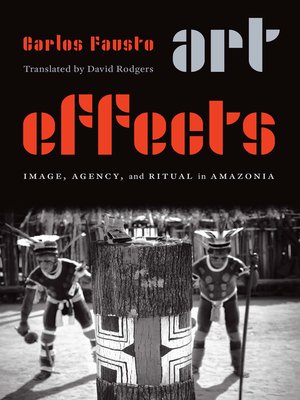
Sign up to save your library
With an OverDrive account, you can save your favorite libraries for at-a-glance information about availability. Find out more about OverDrive accounts.
Find this title in Libby, the library reading app by OverDrive.



Search for a digital library with this title
Title found at these libraries:
| Library Name | Distance |
|---|---|
| Loading... |
In Art Effects Carlos Fausto explores the interplay between indigenous material culture and ontology in ritual contexts, interpreting the agency of artifacts and indigenous presences and addressing major themes in anthropological theory and art history to study ritual images in the widest sense. Fausto delves into analyses of the body, aerophones, ritual masks, and anthropomorphic effigies while making a broad comparison between Amerindian visual regimes and the Christian imagistic tradition.
Drawing on his extensive fieldwork in Amazonia, Fausto offers a rich tapestry of inductive theorizing in understanding anthropology's most complex subjects of analysis, such as praxis and materiality, ontology and belief, the power of images and mimesis, anthropomorphism and zoomorphism, and animism and posthumanism. Art Effects also brims with suggestive, hemispheric comparisons of South American and North American indigenous masks. In this tantalizing interdisciplinary work with echoes of Franz Boas, Pierre Clastres, and Claude Lévi-Strauss, among others, Fausto asks: how do objects and ritual images acquire their efficacy and affect human beings?
Drawing on his extensive fieldwork in Amazonia, Fausto offers a rich tapestry of inductive theorizing in understanding anthropology's most complex subjects of analysis, such as praxis and materiality, ontology and belief, the power of images and mimesis, anthropomorphism and zoomorphism, and animism and posthumanism. Art Effects also brims with suggestive, hemispheric comparisons of South American and North American indigenous masks. In this tantalizing interdisciplinary work with echoes of Franz Boas, Pierre Clastres, and Claude Lévi-Strauss, among others, Fausto asks: how do objects and ritual images acquire their efficacy and affect human beings?







